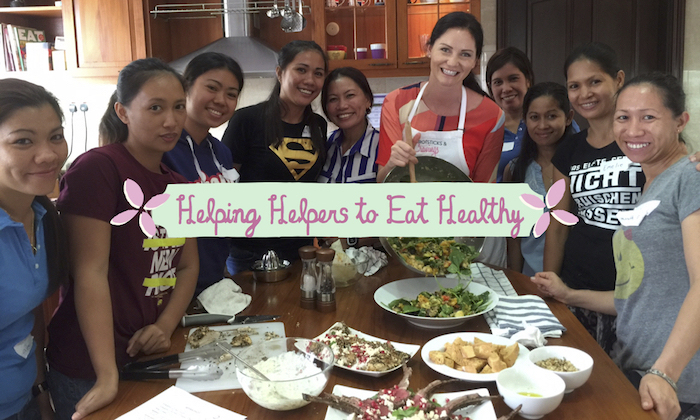
 Post Category - WellnessWellness - Post Category - NutritionNutrition
Post Category - WellnessWellness - Post Category - NutritionNutritionIf your helper’s cooking your food, consider whether she knows the basics about nutritious ingredients (both for your family and for herself). We chat with one family about the benefits they’ve reaped from the ‘Healthy Helpers’ workshop
Nothing is more important than our health. As busy moms, we put so much time and effort into ensuring that our kids are healthy – part of that is in nurturing and educating them, ensuring they have a good balance of learning, socializing, stimulation and downtime.
Many of us in Singapore are fortunate to have helpers in the household as part of our family unit, for whom we are also responsible – for their healthcare, safety and wellbeing.
More and more we understand that in keeping healthy, preventative methods are key – exercise, keeping stress levels down, and of course, eating well. As employers we can encourage our helpers to be healthier by educating them, and by facilitating them so that they can do so with minimum effort – for example by supporting some kind of daily exercise, giving them time to rest and unwind, and providing access to nutritious food.
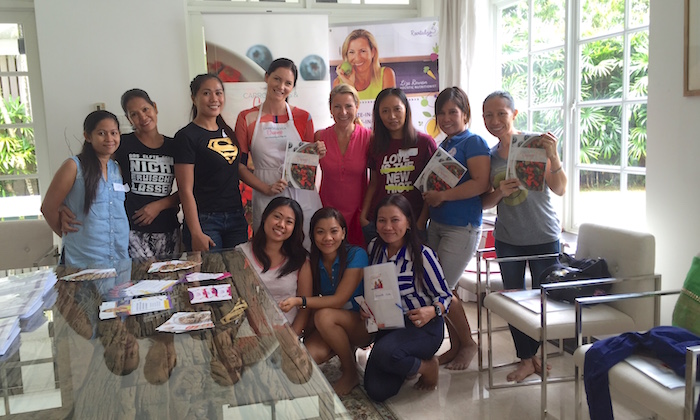
Along with Terri-Anne Leske of Carrotsticks & Cravings, I host workshops to teach helpers about nutrition fundamentals, and how to easily make tasty, healthy meals. Our aim is to not only teach the helpers how to cook Deliciously Healthy meals for the families that they work for, but also to inspire the helpers to take better care of themselves. They learn how to read nutrition labels so that they understand the levels of sugar, fats and salt in foods, about the better cooking oils to use, and of course what makes up a healthy plate, including portion sizes.
Recently I bumped into Lindsay Fipp, whose helper, Emilie, attender our three workshops (Healthy Kids, Healthy Families and Healthy Entertaining). Emilie has been working as a helper in Singapore for eight years, and joined Linsday’s family just over a year ago.
Lindsay told me about how Emilie was advising her about better choices they could make at home, and how Emilie was showing her three young boys how to calculate the number of teaspoons of sugar in various foods. Emilie also changed her own diet, which she believes has cured her of persistent leg pains, migraines and cleared up her skin. She is so enthusiastic about nutrition, that she sends healthy foods items back to family in the Philippines, and tells them of changes they can make to their diet – such as reducing their cola intake, eating less white rice and using less cooking oil.
I spent some time last week in Lindsay’s home to chat with her and Emilie about the changes they made, how the whole household see the benefits, and what we can do (both helpers and employers) to ensure we are all eating better in our efforts to become healthier. Here are some of the highlights:
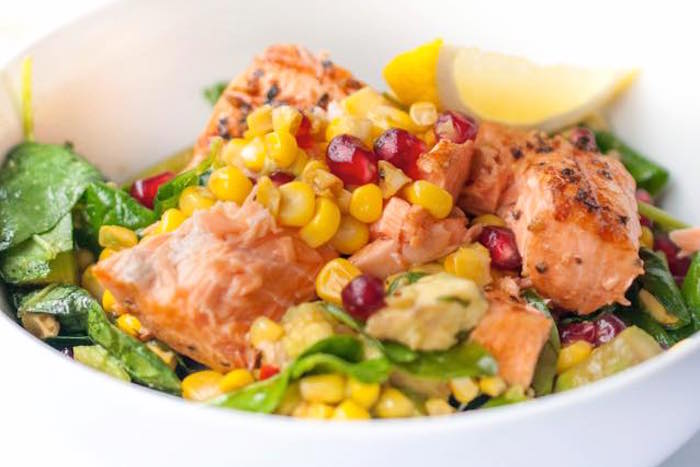
Why did you decide to come on the series of workshops?
Emilie: I wanted to learn more about the foods I can provide, especially more nutritious ones.
Lindsay: Emilie is a great cook; she came to us knowing how to make her own pizza dough and her own sauce. I was surprised she had never been on a cooking course, but since she loved cooking I thought it would be a great opportunity for her. But I hadn’t found the right fit, as she doesn’t need basic instructions. Both of the things she made today (Grilled Corn & Avocado Salad with Salmon, and Black Bean Brownies – both from Terri-Anne’s new book ‘Family Favourites) she had never made before; she likes to try new things. So when I heard about your course I thought it would be the perfect opportunity for her to learn not only new recipes, but also about healthy eating
What are the main things you learned when you came on the workshops?
Emilie: I learned about the unhealthy contents in some foods, and every time you buy food, you have to look at the contents – especially fats, carbohydrates, and sugar. I learned that if we take too much sugar, it can lead to diabetes and to some cancers. Especially refined sugar, we don’t need that!

You eat fairly healthy Emilie, but how do you feel about the diets of your friends?
Emilie: They eat any way, but I say to them that they shouldn’t drink cola, which I now know has 14 teaspoons of sugar.
Lindsay: Emilie went around the whole kitchen saying things like ‘This has 30 teaspoons of sugar, and this has so many…’ so when you explained that 4 grams of sugar is one teaspoon, it was really eye-opening. Emilie shares this with my children showing that this has so much sugar…
How have things changed since taking the workshops?
Lindsay: We’re a partnership in that Emilie has all this information and I do my best to read up on things as well, but a lot of it is now confirmed. Also, she has come home with some new information that I didn’t know; and so now we use healthier oils, or instead of frying we bake, and there’s a lot of ways to avoid packaged foods
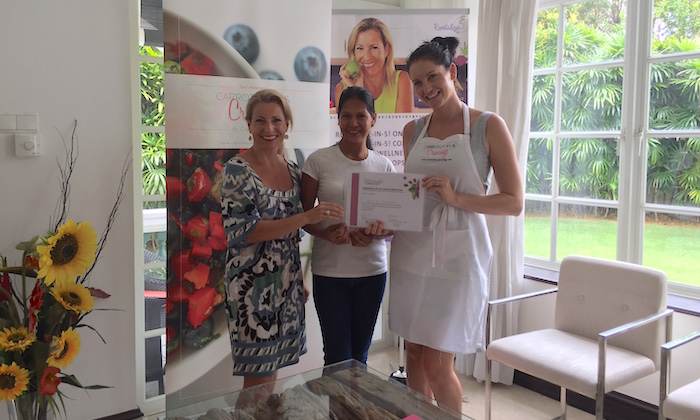
Have you got any advice for other employers?
Lindsay: I think we are so lucky Emilie is interested in cooking and in trying new things, and I can only imagine that if I were living in someone else’s house, who are eating a completely different kind of food, that it might be hard; but Emilie really likes the food that she cooks. It makes us feel happy that she’s eating what she cooks and not just eating packaged noodles, which are simply not healthy. It just not nice, and I don’t like to have separate foods, and separate dinners, shopping. We all eat the same diet and that teaches the kids that this is the kind of food we have in our house, and this is the kind of food everyone in our home eats, because it’s important to be healthy.
If my kids saw Emilie eating in a different way, that would send a mixed message to them, and they see that it’s important for all of us to eat healthy food.
Since the courses, Emilie is more able to adapt to things in the kitchen, and knows what things are interchangeable if we don’t have exactly all the right ingredients. She’s more comfortable with things that can be used, rather than me having to run out and get something – oils that can be interchanged, different spices and herbs, etc. She’s taking more initiative in just seeing what we have, and then making it work which is really wonderful from my perspective.
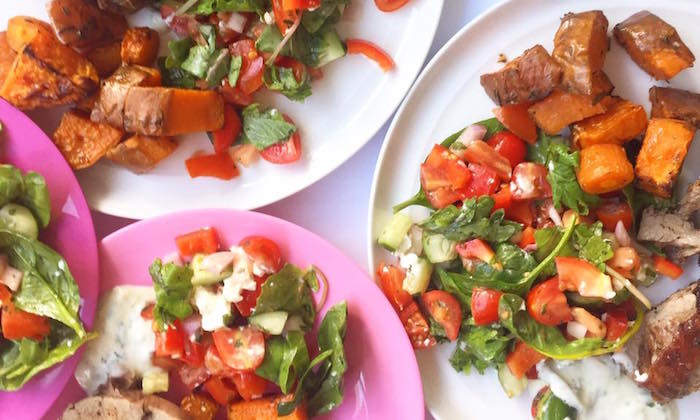
Emily, any advice to any other helpers?
Emilie: If you have a chance, ask your boss to go on this course, because this is really good for you, for your health and your employer’s health, and family, and even for your family back home
Why do you think some helpers struggle to change their diet?
Emilie: I think they have to learn more. I really learned a lot of things that I can share with my friends, especially those who just eat anything.
Lindsay: Well, even here, it’s amazing that we’re not taught nutrition basics in school; it’s surprising what many employers don’t understand.
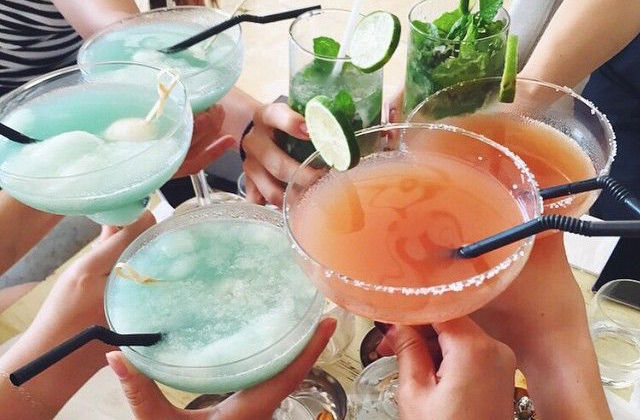
What are the main things you would tell your friends about how to change their diet?
Emilie: I tell them that they shouldn’t drink coke or soft drinks as they have a lot of sugar. I ask them to drink lemon water with some mint. I share with them that they can also give their employers the ideas. To motivate them they must learn more. Before I always had leg pains, especially when I got up in the morning – I had migraines and would feel weak. Changes started happening when I came here (to Lindsay’s home) and especially when I came on the course. Now I am so energetic. I think using the better oils helps – like coconut, olive oil and avocado oil. You have to have a more balanced diet – some meat for protein, carbohydrates, vitamins and minerals
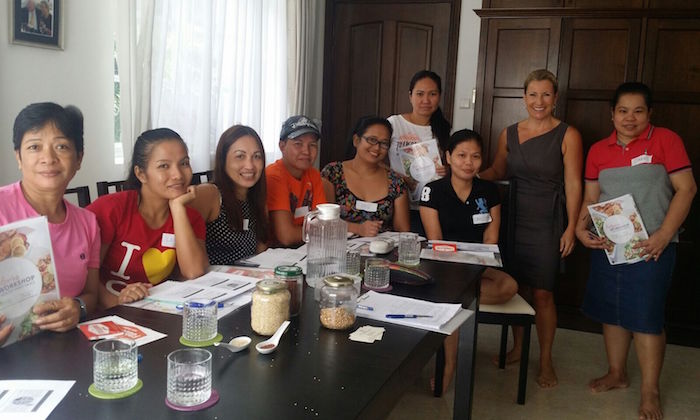
It’s so wonderful that you can eat the same foods here as your employers but for some helpers that might be a challenge. Perhaps eating with the family is not an option for them – so do you have any suggestions how we can help them in this area?
Emilie: Some helpers really like noodles and white rice, so maybe they can change to brown rice – get nutrients from foods like legumes and beans. Instead of drinking milk, they could try almond milk.
Lindsay: One thing that Emilie mentioned to me a while ago, is that when employers give their helpers a separate food budget to buy their own food, it’s not just about budgeting what they buy, it’s about them feeling too tired to cook an extra meal. Sometimes when you’re just exhausted, it’s the ease of the package noodles. If you’ve already prepared the meal for the family and you have to prepare a second meal for yourself – to cook and clean up after a second meal – Emilie was saying that sometimes it’s just easier for helpers to boil the water.
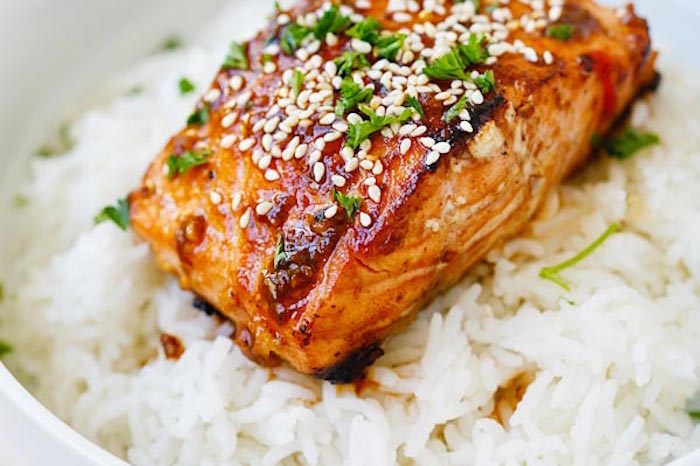
There may be ways to modify the meal – perhaps if there’s an option to make this meal (Grilled Corn & Avocado Salad with Salmon) for the family, and the take a piece of the salmon and eat that with rice, and some chili, or sauce, that’s more to their liking. Having to create a whole separate meal is a lot of work, but perhaps take some of the meal that the family is going to eat, and take part of that – the protein element and some of the vegetables and make that into something more to her taste.
![]()
A key takeaway for helpers cooking their own food is that there’s a healthier version of everything — be that rice, or noodles. Of course helpers should enjoy their food, so no point in eating something they don’t like, but meals can be modified, so it’s meeting somewhere in the middle. One thing for sure is that helpers should try to avoid drinking colas and eating white rice, because we see how high type-2 Diabetes is both here and in the Philippines So, employers can definitely take more responsibility; then as employers we feel better, and it’s a happier household and a healthier household!
Each Helper Workshop (there are three different themes) is priced at $120 per person. Click here for more details, or email [email protected] with any questions!
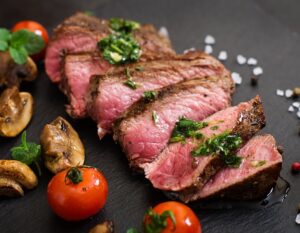





 View All
View All





 View All
View All









 View All
View All


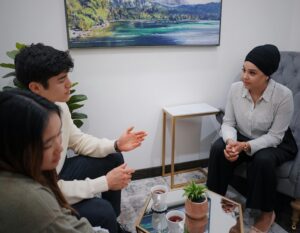


![[𝗦𝗔𝗩𝗘 𝗧𝗛𝗜𝗦] 𝗙𝗿𝗲𝗲 𝗔𝗰𝘁𝗶𝘃𝗶𝘁𝘆 𝗙𝗼𝗿 𝗞𝗶𝗱𝘀 𝗪𝗵𝗼 𝗟𝗢𝗩𝗘 𝗙𝗶𝗿𝗲𝘁𝗿𝘂𝗰𝗸𝘀! 🚒🔥
Skip the usual mall stroll and check out the Civil Defence Heritage Gallery! It’s free, air-conditioned, and housed in Singapore’s very first fire station, just across from Funan Mall.
Spanning two full floors, the gallery dives into Singapore’s firefighting history, major rescue missions, and the evolution of the SCDF. There are interactive exhibits, immersive displays, and even emergency preparedness tips for the public.
Bonus: Selected fire stations also host Saturday morning open houses with guided tours where you can watch fire gear demos, meet firefighters, and see those high-pressure water sprays in action!
𝗛𝗼𝘄 𝗺𝘂𝗰𝗵? FREE
𝗪𝗵𝗲𝗿𝗲? 62 Hill St, Singapore 179367
𝗢𝗽𝗲𝗻𝗶𝗻𝗴 𝗵𝗼𝘂𝗿𝘀? 10 am–5 pm (Closed on Mondays)
Comment “Fire” or link in bio for more details!
Tag your parent crew and plan your next adventure with the little ones! 👨👩👧👦💥
.
.
.
.
.
.
.
#SGFireStation #SCDFGallery #ThingsToDoWithKidsSG #FreeFamilyFun #SGParents #KidFriendlySG #FiretruckLovers #MuseumAdventure #SCDF #HeritageGallery #SGMums #FamilyWeekendSG #LearningThroughPlay #SingaporeWithKids](https://www.sassymamasg.com/wp-content/plugins/instagram-feed/img/placeholder.png)
